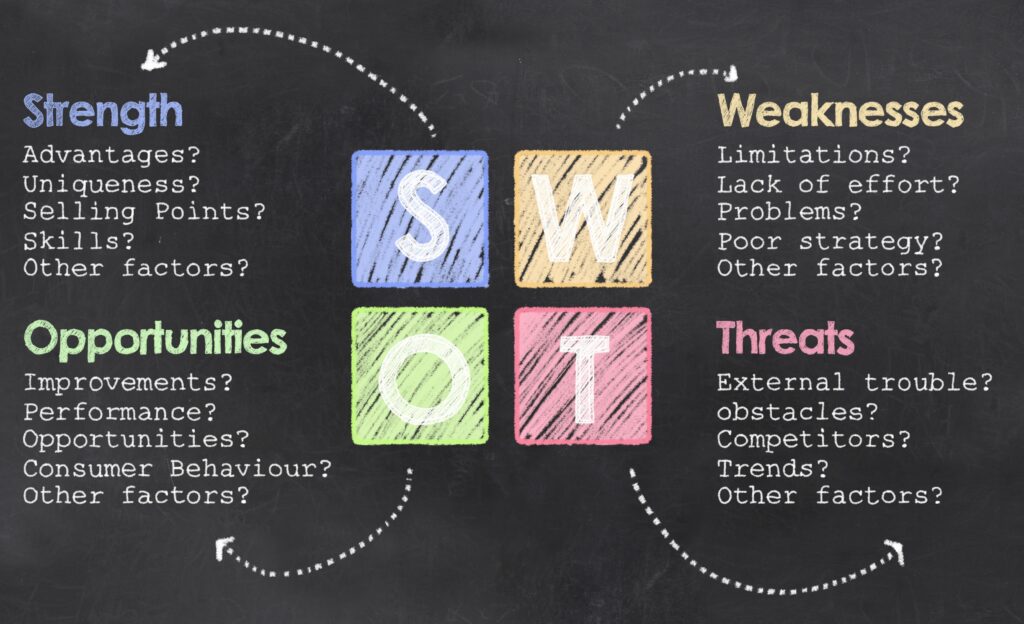In today’s digital age, having a robust digital marketing strategy is essential for any business looking to thrive and succeed in the online space· With countless platforms, tools, and techniques available, creating an effective strategy can seem overwhelming· However, by following a structured approach and understanding your audience, goals, and resources, you can develop a tailored plan that drives results· In this comprehensive guide, we’ll explore the key steps to crafting a successful digital marketing strategy·
Understanding Your Business and Audience
Before diving into the specifics of your digital marketing strategy, it’s crucial to gain a deep understanding of your business, industry, and target audience· This foundational step will inform every aspect of your strategy moving forward·
1· Define Your Business Objectives: Start by clarifying your business goals· Are you looking to increase brand awareness, drive website traffic, generate leads, or boost sales? Your digital marketing efforts should align closely with these objectives to ensure they contribute meaningfully to your overall business success·
2· Know Your Audience: Next, identify your target audience· Who are your ideal customers? What are their demographics, interests, pain points, and online behaviors? Conducting market research, analyzing customer data, and creating buyer personas can help you gain valuable insights into your audience, enabling you to tailor your messaging and tactics accordingly·
Conducting a SWOT Analysis

Once you have a clear understanding of your business and audience, conduct a SWOT analysis to assess your strengths, weaknesses, opportunities, and threats in the digital marketing landscape·
1· Strengths: Identify what sets your business apart from competitors· This could include unique products or services, strong brand reputation, or a loyal customer base·
2· Weaknesses: Recognize areas where your business may be lacking or underperforming· This could be outdated technology, limited resources, or gaps in your online presence·
3· Opportunities: Explore potential opportunities for growth and improvement in the digital realm· This could involve emerging trends, untapped markets, or new technologies that align with your business objectives·
4· Threats: Consider external factors that could pose challenges to your digital marketing efforts· This might include intense competition, changes in consumer behavior, or shifts in industry regulations·
Setting SMART Goals
With a clear understanding of your business, audience, and competitive landscape, it’s time to set specific, measurable, achievable, relevant, and time-bound (SMART) goals for your digital marketing strategy·
1· Specific: Clearly define what you aim to accomplish with your digital marketing efforts· Instead of a vague goal like “increase website traffic,” strive for specificity, such as “increase organic website traffic by 25% within six months·”
2· Measurable: Establish metrics and key performance indicators (KPIs) to track your progress and success· Whether it’s website visits, conversions, or engagement rates, measurable goals provide tangible benchmarks to evaluate your performance·
3· Achievable: Set realistic goals that align with your resources, capabilities, and timeframe· While it’s important to aim high, ensure your goals are within reach to maintain motivation and momentum·
4· Relevant: Ensure your goals are aligned with your broader business objectives and digital marketing strategy· Each goal should contribute meaningfully to your overall success and growth·
5· Time-bound: Set deadlines and timelines for achieving your goals· This adds a sense of urgency and accountability to your digital marketing efforts, helping you stay focused and on track·
Choosing the Right Digital Channels and Tactics

With your goals in place, it’s time to determine which digital channels and tactics will best help you reach your target audience and achieve your objectives·
1· Website Optimization: Your website serves as the cornerstone of your online presence· Ensure it is user-friendly, mobile-responsive, and optimized for search engines (SEO) to attract organic traffic and drive conversions·
2· Content Marketing: Create high-quality, relevant content that educates, entertains, or inspires your audience· This could include blog posts, videos, infographics, ebooks, and more· Distribute your content across various channels to maximize visibility and engagement·
3· Social Media Marketing: Leverage social media platforms to connect with your audience, build relationships, and promote your brand· Identify which platforms your target audience frequents most and develop a content strategy tailored to each channel·
4· Email Marketing: Nurture leads and engage customers through targeted email campaigns· Personalize your messages based on user preferences, behaviors, and lifecycle stages to increase open rates, click-through rates, and conversions·
5· Search Engine Marketing (SEM): Boost your visibility in search engine results pages (SERPs) through paid advertising campaigns, such as Google Ads or Bing Ads· Target relevant keywords, optimize ad copy, and track performance metrics to maximize ROI·
6· Influencer Marketing: Partner with influencers or industry experts to amplify your brand reach and credibility· Identify influencers whose values and audience align with your brand, and collaborate on authentic, mutually beneficial campaigns·
7· Analytics and Measurement: Continuously monitor and analyze your digital marketing efforts using tools like Google Analytics, social media insights, and email marketing platforms· Track key metrics, identify trends and opportunities, and make data-driven adjustments to optimize your strategy over time·
Allocating Resources and Budget
Effective digital marketing requires adequate resources and budget allocation to execute your strategy effectively· Determine how much you can realistically invest in each channel and tactic based on your goals, audience, and expected ROI·
1· Resource Allocation: Consider factors such as manpower, expertise, and technology infrastructure needed to execute your digital marketing initiatives· Assess your internal capabilities and identify areas where you may need to outsource or invest in additional resources·
2· Budgeting: Allocate your budget strategically based on the cost-effectiveness and potential impact of each channel and tactic· Prioritize channels that align most closely with your goals and target audience, and be prepared to adjust your budget allocation as needed based on performance and ROI·
Implementing and Iterating Your Strategy

With your digital marketing strategy in place, it’s time to execute your plan and monitor its performance closely· Be prepared to iterate and optimize your strategy based on real-time data, feedback, and evolving market trends·
1· Implementation: Roll out your digital marketing initiatives according to your planned timeline and strategy· Ensure all team members are aligned and equipped to execute their respective tasks effectively·
2· Monitoring and Optimization: Continuously monitor the performance of your digital marketing efforts using relevant metrics and KPIs· Identify areas of strength and weakness, and make data-driven adjustments to optimize your strategy for better results·
3· Testing and Experimentation: Don’t be afraid to experiment with new channels, tactics, and messaging to see what resonates best with your audience· A/B testing, multivariate testing, and pilot campaigns can provide valuable insights into what works and what doesn’t, helping you refine your approach over time·
4· Adaptation: Stay agile and adaptable in response to changes in the digital landscape, industry dynamics, and consumer behavior· Be willing to pivot your strategy as needed to seize new opportunities and address emerging challenges effectively·
Conclusion:
Crafting a comprehensive digital marketing strategy requires careful planning, research, and execution· By understanding your business objectives, audience needs, and competitive landscape, setting SMART goals, choosing the right channels and tactics, allocating resources effectively, and continually monitoring and optimizing your efforts, you can develop a strategy that drives meaningful results and contributes to your overall business success in the digital marketing·
Remember, digital marketing is not a one-size-fits-all approach· Each business is unique, and your strategy should be tailored to your specific goals, audience, and resources· By following the steps outlined in this guide and staying agile and adaptable in your approach, you can create a digital marketing strategy that helps you stand out, connect with your audience, and achieve your business objectives in today’s competitive online landscape·

